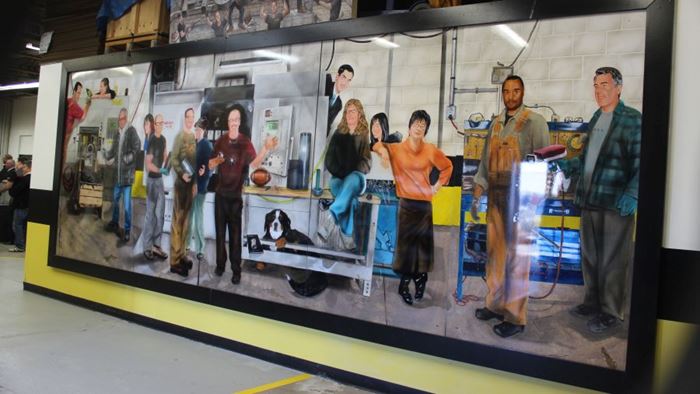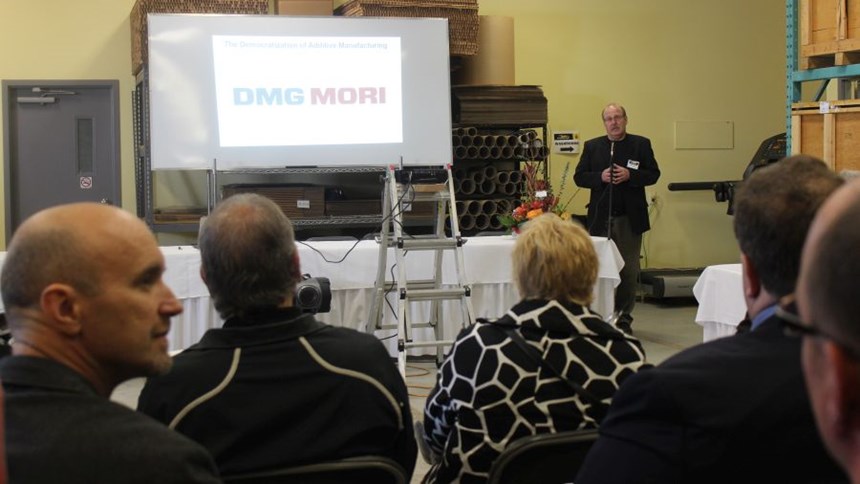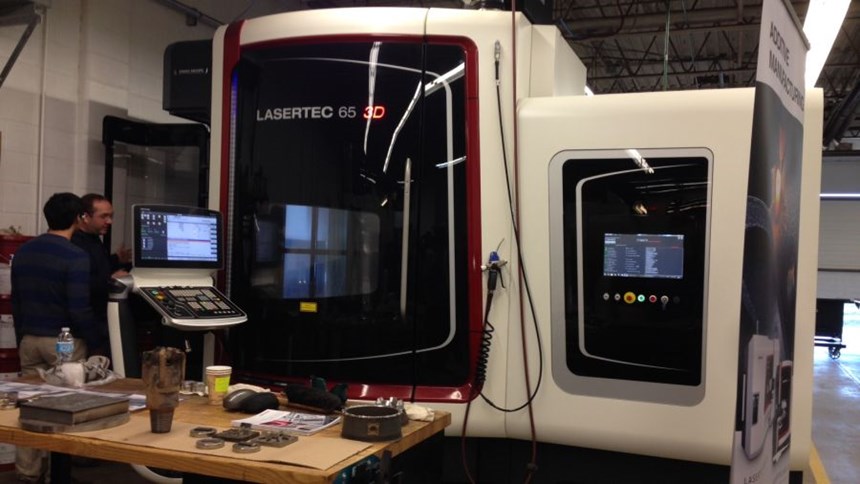Hybrid Manufacturing in the Spotlight at Canadian AM Forum
PTooling's hybrid machining center became the centerpiece of an AM forum and open house held at the company's Ontario facility.
Manufacturers from Canada and the United States gathered at PTooling’s Amherstburg, Ontario, facility April 27-28, to see hybrid manufacturing technology in action and participate in the Additive Manufacturing Forum. Jointly hosted by Canada Makes and the WindsorEssex Economic Development Corporation, the event included presentations from Marv Fiebig, president of PTooling; Dr. Gregory Hyatt, senior vice president and CTO of advanced solutions development for DMG MORI USA; and Matthias Kuehnelt of Hoedtke GmbH & Co. KG.
Fiebig focused his talk on what was in many ways the centerpiece of the event, PTooling’s DMG MORI Lasertec 65 3D hybrid. The machine combines CNC milling capabilities with a powder-fed laser deposition head to enable both additive and subtractive operations in the same cycle. PTooling’s became the first Lasertec additive manufacturing machine to be installed in North America when the company took delivery of it in December 2015. Now, it is one of three on the continent, but it remains the only one producing parts for external customers (the other two are captive machines owned by SpaceX and Boeing).
Fiebig’s presentation described PTooling’s experience with the Lasertec and how additive manufacturing has affected its business. The company primarily serves the oilfield industry, but Fiebig says the hybrid is opening up other possibilities in industries such as aerospace and plastics molding. He is also finding that new customers are now seeking out PTooling because of this capacity. Hosting the forum and open house was another way to help educate colleagues and potential customers about the technology.
Dr. Hyatt looked to AM’s future, drawing comparisons between additive manufacturing today and the automotive industry in the early 20th century and arguing that additive is on its way to being democratized the way that the auto industry eventually was. “We’re 80 percent of the way there,” he said, citing AM’s current capabilities to build on existing structures, incorporate multiple materials and integrate subtractive machining.
What will it take to achieve the remaining 20 percent? Cost per part must continue to come down and work envelopes must increase. Software that is easy to use and supports both AM and subtractive machining must be available. Robust machines that can handle 24/7 production must be developed. Hyatt also spoke to how DMG MORI is working to address these remaining concerns to help bring AM into production.
Matthias Kuehnelt of Hoedtke spoke about the company’s research into best practices for hybrid manufacturing. Hoedtke, based in Germany, also owns a Lasertec 65 3D and has performed extensive testing on this machine with regard to both its additive and subtractive capabilities. Kuehnelt presented results from various tests exploring how parameters such as table movement and the direction of deposition affect the strength and quality of additive parts.
The event concluded with a Q&A session with the three speakers, and tours of PTooling’s facility. The organizers plan to make the additive manufacturing forum an annual event, and PTooling expects to host it again next year.
Related Content
-
Video: Intelligent Layering Metal 3D Printing at 3DEO
Contract manufacturer 3DEO delivers metal parts using Intelligent Layering, a binder jetting-like 3D printing process the company developed and operates internally. Here’s how it works.
-
Video: Hybrid Manufacturing Without Melting: Hermle’s Metal Powder Application (MPA) Process
The Metal Powder Application (MPA) process uses cold spray to apply metal to an existing workpiece. Because the material deforms rather than melts, MPA opens new possibilities for functional grading and other multimaterial applications.
-
UMaine’s FoF 1.0 Large-Scale 3D Printer Shatters Former Guinness World Record for Additive Manufacturing
The large-scale thermoplastic polymer printer offers new opportunities for eco-friendly and cost-effective manufacturing for numerous industries, including national security, affordable housing, bridge construction, ocean and wind energy technologies, and maritime vessel fabrication.

.jpg;width=70;height=70;mode=crop)
















